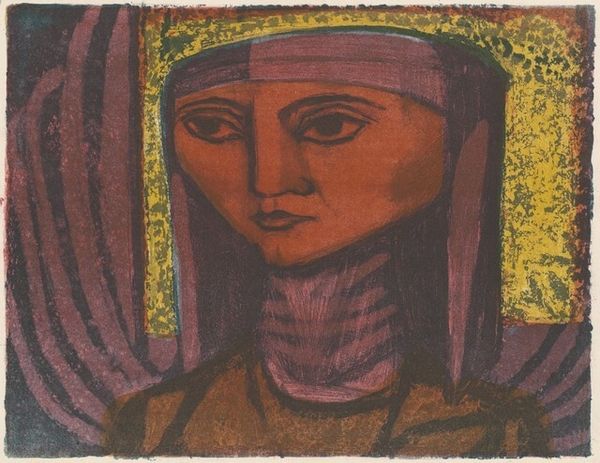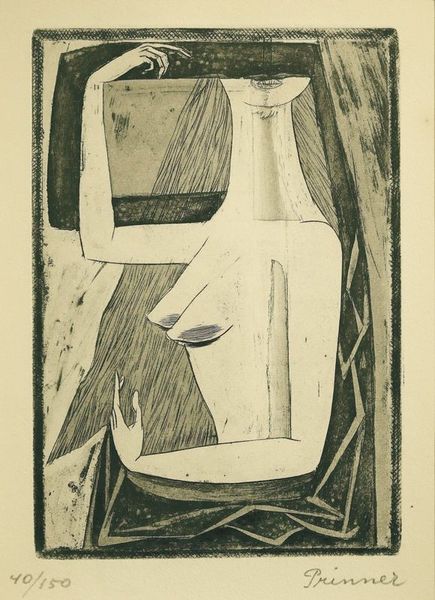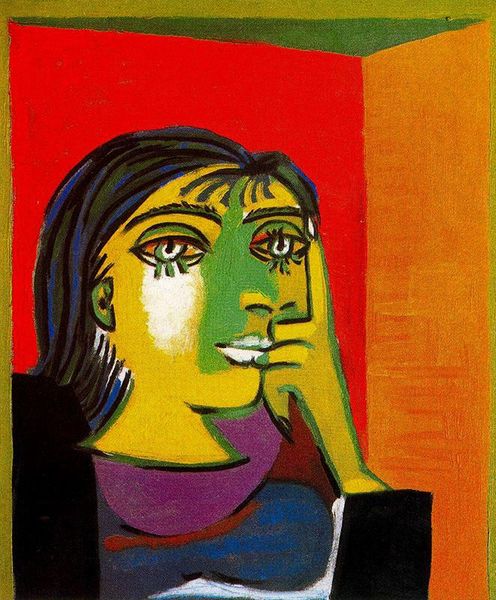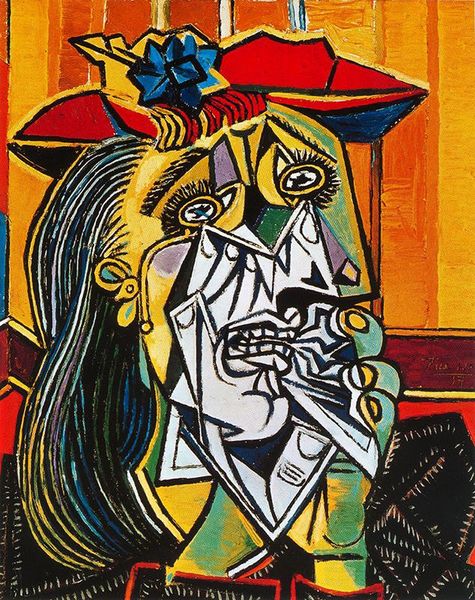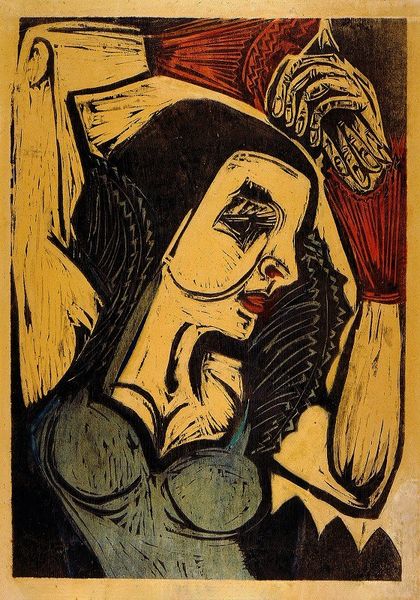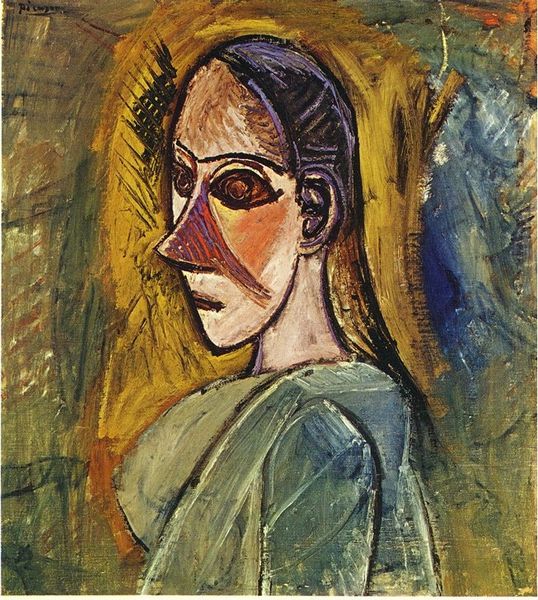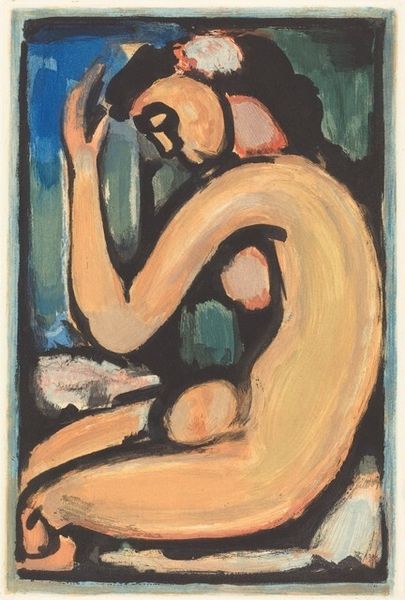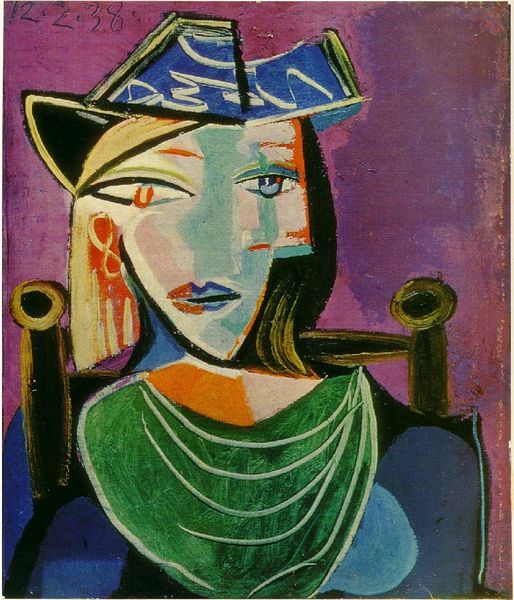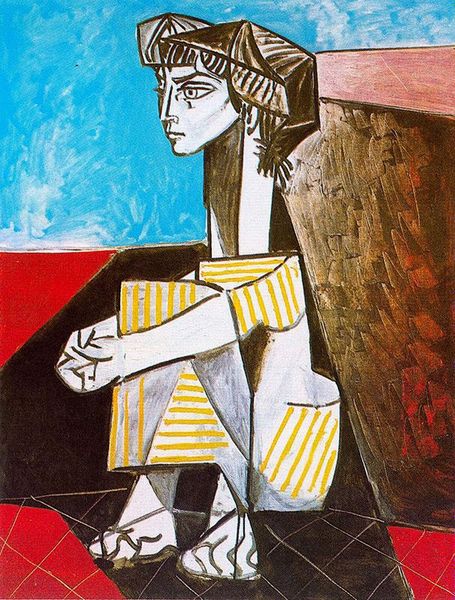
Copyright: National Gallery of Art: CC0 1.0
Editor: So this is Benton Spruance’s “Fortune Teller,” a lithograph from 1954. There's something unsettling about her gaze and the geometric shapes in the background; it’s really visually striking. What social commentaries were prevalent when this piece was made? Curator: This work certainly has a disquieting power, doesn’t it? Spruance created this piece during the Cold War era when there was widespread social anxiety. What effect do you think the "fortune teller" trope has on viewers of the time? Editor: I think it possibly offered both a sense of hope and anxiety. The idea of peering into the future must have been compelling, maybe even comforting, in such an uncertain political landscape. Curator: Exactly! It engages with themes of societal insecurity. The figure, caught between superstition and uncertainty, mirrors the public's complex relationship with the future. And if we think about how art institutions reflected that...do you notice how it avoids directly depicting any political figure? Editor: That makes perfect sense! Focusing on fortune tellers offered a symbolic outlet without directly criticizing any political party or individual, I suppose. Curator: Yes, art became a site where anxiety was navigated indirectly through various symbolic images rather than explicit political commentaries. Do you think the artist made a daring, rebellious choice at the time or not really? Editor: Considering the context, addressing fears through symbolic representation was probably the clever thing to do, I suppose! Now I'm seeing it as a more cautious way to question societal norms without directly confronting the political powers of the time. Thanks so much. Curator: My pleasure. It highlights how much social anxieties affect art. The more you learn to situate artworks within historical conditions, the richer the experiences become!
Comments
No comments
Be the first to comment and join the conversation on the ultimate creative platform.


